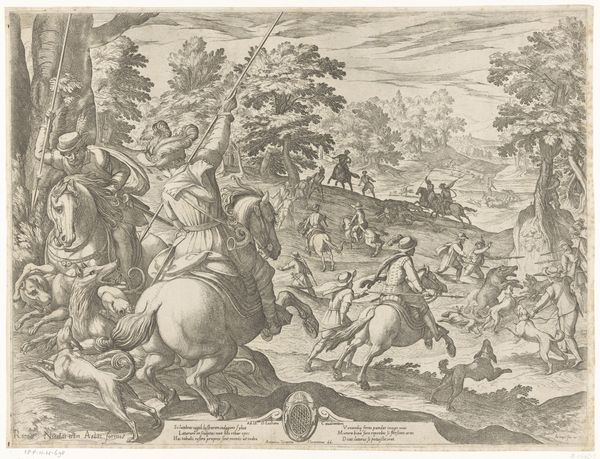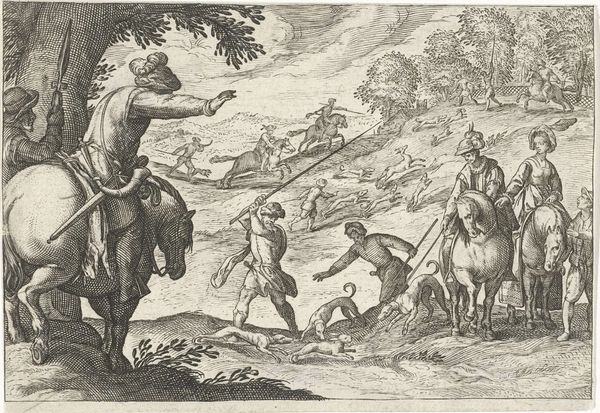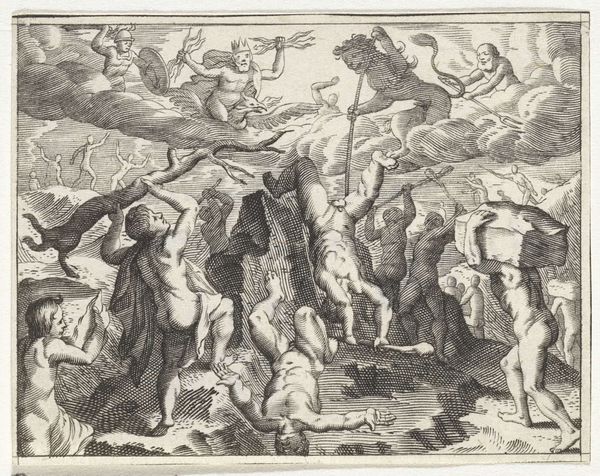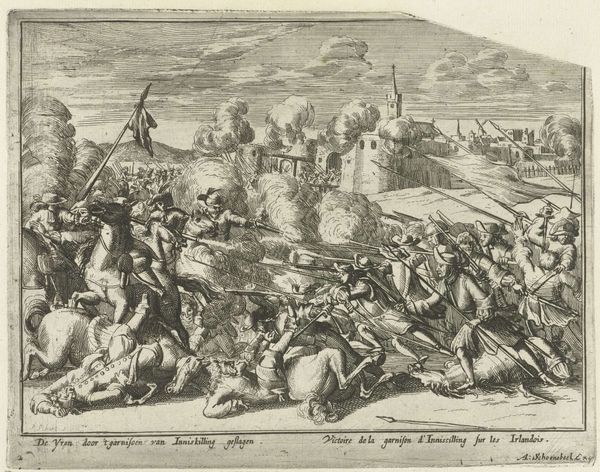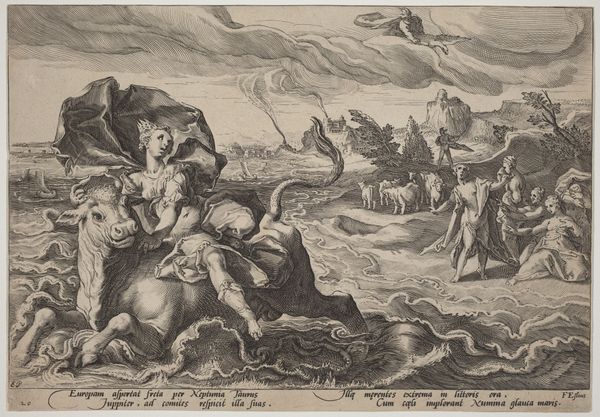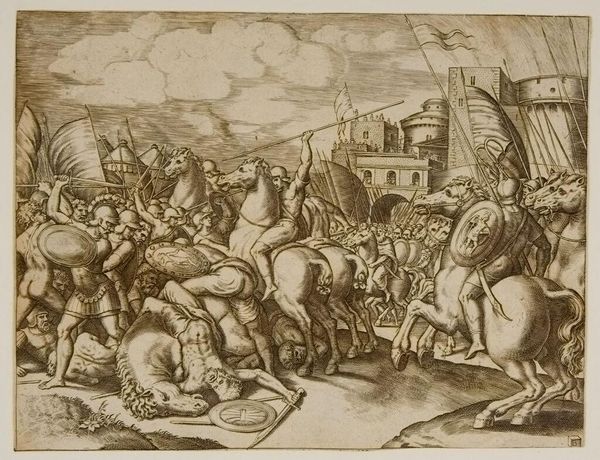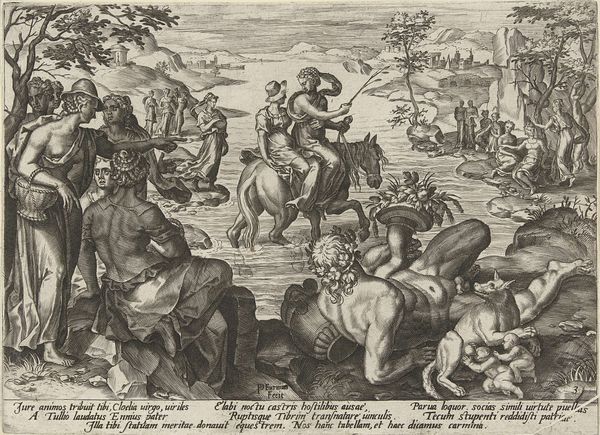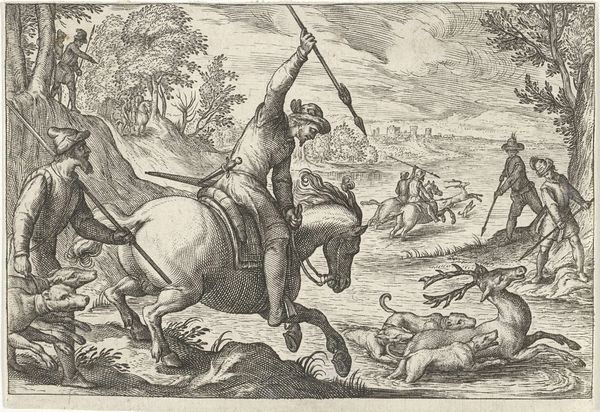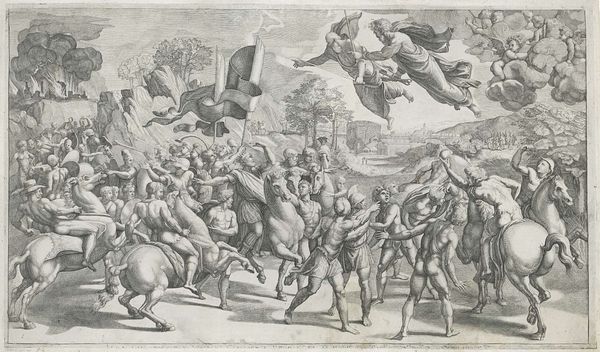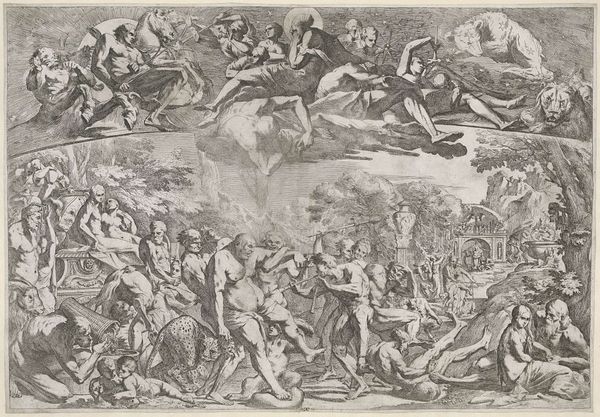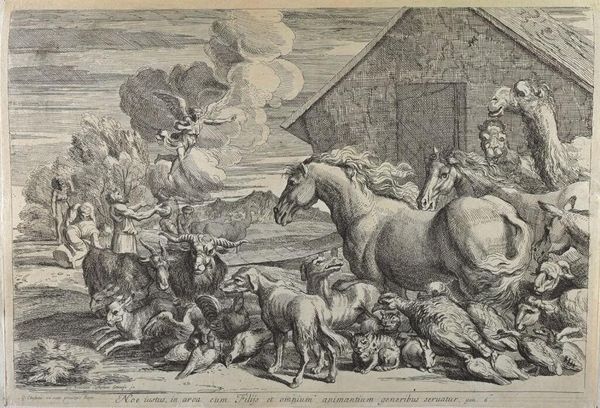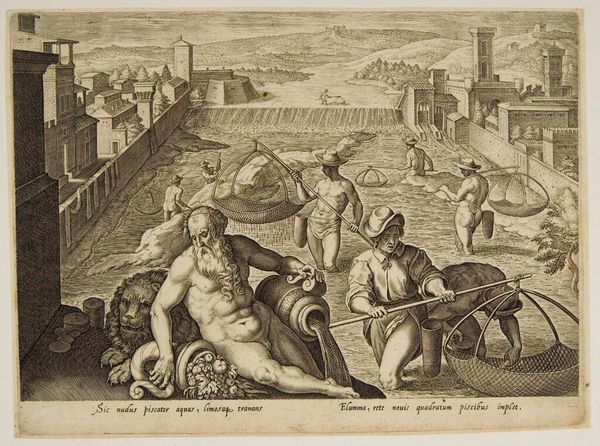
engraving
#
narrative-art
#
baroque
#
landscape
#
figuration
#
history-painting
#
academic-art
#
engraving
Dimensions: height 472 mm, width 675 mm
Copyright: Rijks Museum: Open Domain
Curator: Let's consider Andrea Procaccini's engraving, "Cloelia Crossing the Tiber," made sometime between 1681 and 1734. Editor: It's interesting. I'm immediately struck by the dramatic composition and the contrast between the detailed figures and the more sparsely rendered landscape. How do you interpret this work? Curator: For me, the beauty of the image resides not only in its surface appearance but also in the labor embedded in the materials and process of engraving. Think about the painstaking process: the artist, using metal tools to incise lines onto a metal plate, building up the image through countless actions. Do you see the implications for artistic value here? Editor: I think so. Is the time-intensive nature of the engraving itself contributing to the artwork's perceived value, contrasting with maybe a quicker medium like painting? Curator: Exactly. The historical context matters. This was a period obsessed with craftsmanship, skill, and, fundamentally, controlling production. Procaccini would have spent a considerable amount of time, likely for an elite patron who had very precise demands for the finished product. And think of the distribution: each print becomes a vehicle for disseminating a specific ideology tied up in Roman history. Editor: I didn't consider that, but it makes perfect sense. So, the material itself carries the weight of artistic labor and political intentions. Curator: Indeed. We can even consider the kind of paper it was printed on. What sort of fibers were used, and who was accessing it? This image wasn’t just passively “viewed”; it was consumed and circulated within a network of power, wealth, and very specialized forms of artisanal skill. Editor: That opens up a whole new way to see the artwork, less as a singular vision and more as a product of its making, and its historical conditions. Curator: Precisely! Shifting our gaze from iconography to the material conditions lets us see the artwork’s function within the circuits of consumption, distribution and exchange. Editor: Thanks, I'll never see engravings the same way again!
Comments
No comments
Be the first to comment and join the conversation on the ultimate creative platform.
